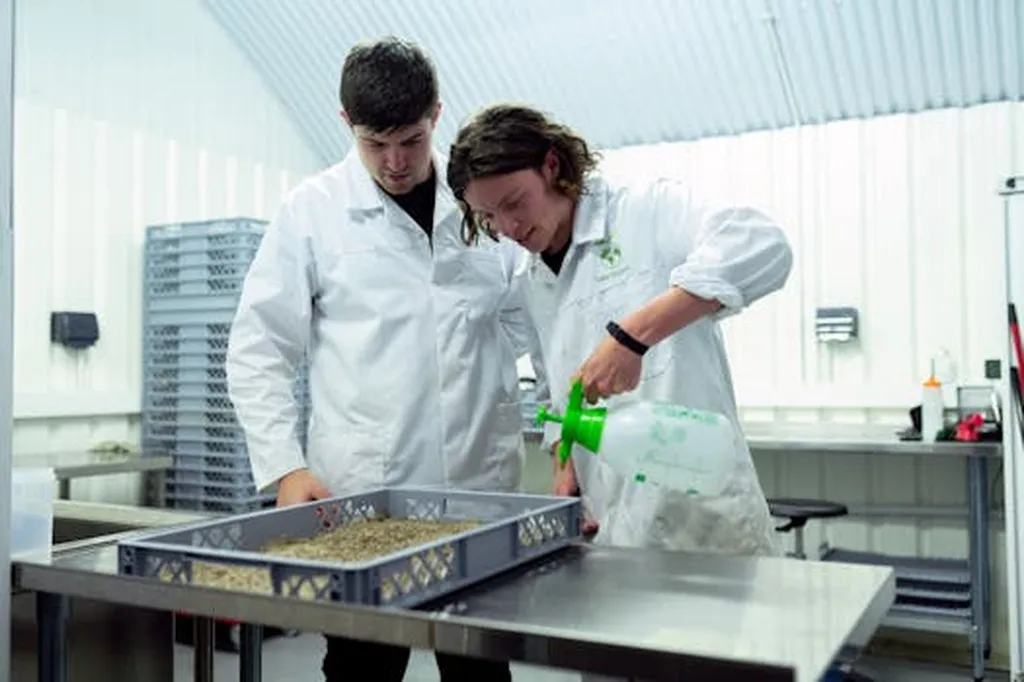In the heart of Uruguay, a silent revolution is unfolding beneath our feet, one that could reshape our understanding of soil health and agricultural sustainability. A groundbreaking study led by Matías Giménez from the Microbial Genomics Laboratory at the Institut Pasteur de Montevideo has unveiled the profound impact of agricultural practices on soil microbiomes, with significant implications for the energy and agricultural sectors.
The research, published in the Environmental Microbiome (translated to English as ‘Environmental Microbiome’), compared soil microbial communities in native grasslands grazed by livestock with those in cropland soils. By employing advanced metagenomic techniques, Giménez and his team characterized the diversity and functional potential of the soil microbiome, focusing on its roles in carbon, nitrogen, and phosphorus cycling.
The findings are striking. Agricultural soils exhibited a significant decrease in fungal diversity and a restructuring of the fungal community, highlighting the profound impact of farming practices on soil biology. “We observed a noticeable shift in bacterial composition as well,” Giménez noted. “While bacterial diversity did not decline, the changes in community structure suggest that agricultural practices are altering the soil ecosystem in ways we are only beginning to understand.”
One of the most concerning findings was the reduced abundance of bacteriophages in agricultural soils. Bacteriophages are viruses that infect bacteria, playing a crucial role in bacterial necromass formation—a process vital for maintaining soil health and fertility. The decline in bacteriophages, coupled with a reduction in enzymes involved in microbial necromass decomposition, suggests potential long-term consequences for soil carbon dynamics and crop productivity.
The study also revealed a marked decrease in genes and enzymes involved in nitrogen and phosphorus cycling in croplands. These nutrients are essential for plant growth and soil fertility, and their diminished functionality could have far-reaching implications for agricultural productivity and sustainability.
So, what does this mean for the future of agriculture and the energy sector? The findings underscore the need for sustainable agricultural practices that preserve microbial diversity and functionality. By understanding the mechanisms through which agriculture alters soil ecosystems, we can develop more effective soil management strategies that support environmental sustainability and agricultural productivity.
Giménez emphasizes the importance of these findings for the energy sector as well. “Healthy soils are not just crucial for agriculture; they also play a significant role in carbon sequestration and mitigating climate change,” he explained. “By preserving soil microbial diversity, we can enhance the soil’s ability to store carbon, contributing to a more sustainable energy future.”
This research provides a novel perspective on the intricate relationship between land use, soil microbiomes, and ecosystem services. As we strive to meet the growing demands for food and energy, it is imperative that we adopt practices that safeguard the delicate balance of soil ecosystems. The insights gained from this study offer a promising path forward, one that could revolutionize our approach to agriculture and energy production.
In the words of Giménez, “The soil is a complex and dynamic ecosystem, and our actions have a profound impact on its health. By working in harmony with nature, we can ensure the resilience of our soils and the sustainability of our agricultural and energy systems.”

